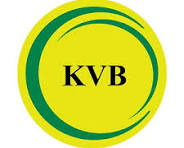 Since the days of yore, it has been a dreamland for foreign travelers. Italy stands for culture, history, and beauty, starting from historic ruins of Rome, gondolas of Venetian love, and the rolling Tuscan landscape to the city that celebrates its Italian heritage by pampering tourists with an artistic feast. But then, there happens to be one difficult roadblock: the Italy visa. Knowing what the visa is about and what to expect from your trip to Italy can even ease your travel preparations and make them enjoyable.
Since the days of yore, it has been a dreamland for foreign travelers. Italy stands for culture, history, and beauty, starting from historic ruins of Rome, gondolas of Venetian love, and the rolling Tuscan landscape to the city that celebrates its Italian heritage by pampering tourists with an artistic feast. But then, there happens to be one difficult roadblock: the Italy visa. Knowing what the visa is about and what to expect from your trip to Italy can even ease your travel preparations and make them enjoyable.
Why Italy should be on your itinerary
Italy is not just another country in Europe. It is a living museum, a cooking school, and a fashion house. Rome, known as the Eternal City has sites such as the Colosseum, St. Peter’s Basilica, and the Vatican Museums. Florence, the cradle of the Renaissance, is home to Michelangelo’s and Botticelli’s artistic masterpieces, and beautiful landscapes, wanting to tempt any aficionado. To say that the gondoliers and their bikes echo in the canals of Venice is an expression second to none.
With the natural beauty of Italy, it is everywhere. Whether it’s the Amalfi Coast’s steep cliffs plunging into the turquoise sea, or the Dolomites, whispering to those breathtaking peaks, and finally, Sicily, a culture and landscape highlight difficult to pass by, so whichever you avail after the correct visa would allow you to avail all of this.
An Overview of Italy Visa
If your plans are for a short trip for tourism, business or family purposes, and if you are going to Italy for less than 90 days, then you will likely be looking for the Schengen short stay visa (Type C) which will notify your ability to travel around Italy and within the Schengen area for a maximum of 90 days during a 180 day time period. If, on the other hand, your plans are for a longer stay ( for example, study, work or residency), then you will likely be looking for a national (Type D) visa.
The Italian visa application will require a specific list of documents including:
- A valid passport with valid dates and available pages.
- A completed visa application form.
- Recent passport size photographs.
- Proof of travel insurance for medical emergencies.
- Proof of accommodation, such as hotel bookings or an invitation letter.
- Proof of sufficient funds to your show you can support your time in Italy.
- Proof of a travel itinerary.
You will be required to provide some of these documents, and could provide others that could be additional depending on what you plan on doing during your trip to Italy, just because. It is always best practice to check for updated information around 1-2 weeks before you apply.
Tips for pain-free Visa application
- Start Early – Don’t assume that visa processing takes 1-2 weeks. Processing can take anywhere from a few days, a few weeks or many weeks sometimes.
- Organize Documents – Most applicants will have their personal financial documentation and personal trial booking and travel plans filed somewhere.
- Get Travel Insurance – Travel insurance is not just a procedure of travel. You’re travelling without a safety net when you are travelling without travel insurance.
- Be Honest – Making sure that the information that you provide on your application is correct. The more information that is provided, the less time wasted if there’s delays or questions.
Generally, a good application places you in a better position for success and gives you more time to relax and enjoy the travel experience instead of stressing over paperwork.
Showing Italy Beyond the Tourist Traps
Once you are approved and can get to Italy, the real fun begins! Italy is more than just sights; it’s the small towns, customs of locals, and all the surprises in-between. You can see the famous whitewashed houses of Alberobello in Puglia. You can learn to forage for truffles and go wine tasting in Umbria. Capri’s best beaches and stunning sunsets have some competition with Sardinia!
Food is another fully pleasurable reason to never be disappointed in Italy. Each region has its own specialty; pizza in Naples, risotto in Milan, pasta in Bologna, seafood in Sicily, not to mention the regional wines that accompany the meals.
Traveling in Italy is cheap and easy! Nothing is easier than taking a train! High-speed trains connect Rome, Florence, Venice, and Milan. Regional trains either go along the coast or wind through the countryside.
Final Thoughts
Traveling to Italy is more than just a notch on your future travel list, it is being part of a culture and society that appreciates art, history, beauty, and food. The first step is to ensure that you can get the appropriate visa, and from there, you will be able to enjoy creating memories worth keeping for a lifetime.
Most travelers will partner with a trusted information resource, such as OneVasco, to help with the visa process to assist with an instance of holds being approved, as you want to have credible information and support to make the process streamlined and less intimidating for your trip.
With your Italy visa approved the only thing to figure out is if your first stop is the Roman Forum, a vineyard in Tuscany, or a gondola ride through the canals of Venice. I can guarantee that with either way; it will be both a sweet and historic experience, and these memories will live long past your Italian trip year.
 Newspatrolling.com News cum Content Syndication Portal Online
Newspatrolling.com News cum Content Syndication Portal Online







